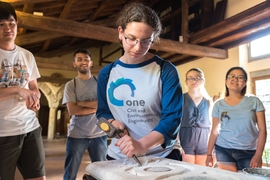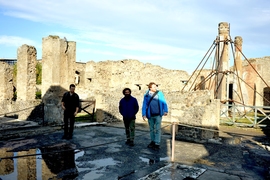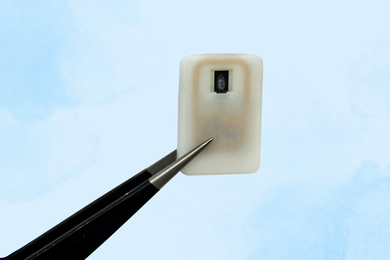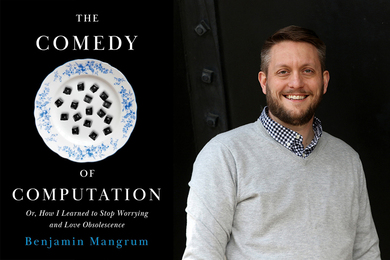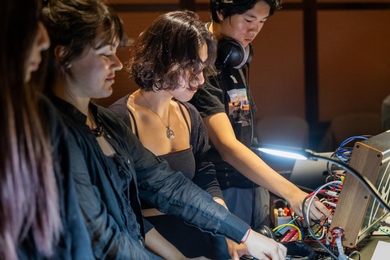Contemporary building materials are guaranteed for only about 100 years, yet structures built in Ancient Rome have survived for millennia. Questions about what accounts for this discrepancy in durability and resilience, and what engineers could learn from ancient technologies, are central to the research interests of Admir Masic, the Esther and Harold E. Edgerton Career Development Assistant Professor of Civil and Environmental Engineering at MIT.
“Ancient materials that have resisted degradation over time, and despite environmental conditions, can inform us about properties that contribute to performance and longevity,” Masic says. “This ‘antiqua-inspired’ method offers a new way of approaching the creation of more sustainable, durable materials for the future.”
To encourage peer researchers to consider how understanding ancient materials and processes can be leveraged for the development of innovative systems and devices, Masic, along with Loic Bertrand, the director of the IPANEMA European Research platform on ancient materials, a joint laboratory between the National Center for Scientific Research, Ministry of Culture, Versailles Saint-Quentin-en-Yvelines University, and Université Paris-Saclay; Claire Gervais, professor of materials chemistry at Bern University of the Arts; and Luc Robbiola, a research engineer at Toulouse University, composed a conceptual review of the many opportunities afforded by ancient materials. The paper, entitled “Paleo-inspired systems: Durability, Sustainability and Remarkable Properties,” was recently published in Angewandte Chemie International Edition.
The “paleo- or antiqua-inspired” train of thought put forth by the researchers is modeled after the bio-inspired research approach, in which researchers look at the potential to learn from structures, composition, and outstanding properties of some biological materials to mimic and engineer new materials. As bio-inspired researchers use natural occurrences, the paleo-inspired methodology explores ancient systems and processes, adding another dimension for looking towards the future of materials.
In the paper, a variety of ancient technologies were presented, including Roman concrete, and pigments such as Mayan and Egyptian blues. In the case of the concrete recipe and methods used in Ancient Rome, the concoction could be reverse-engineered to develop and optimize novel construction materials based on ancient practices and techniques.
Ancient Romans didn’t use 3-D printing technologies or highly sophisticated nanomaterials in their construction. In fact, they came up with solutions that include volcanic ash or recycled materials, like brick fragments, to strengthen the concrete. Interestingly, these approaches have considerably less embodied energy than the commonly used Portland cement, and exhibit durability beyond the lifespan of modern infrastructure.
“This work opens exciting new avenues for the development of novel materials. There is a great deal that we can learn from antiquity, and in particular, traditional Roman concrete offers many potential advantages for construction in the future,” says Class of 1942 Professor of Civil and Environmental Engineering and professor of architecture John Ochsendorf, an active proponent of antiqua-inspired structural designs. “We are really just beginning to understand the underlying chemistry of construction materials from antiquity.”
The Masic lab, which was established in 2015, uses advanced characterization tools to design complex multi-scale materials, Masic explains. The Masic lab’s position within the Department of Civil and Environmental Engineering (CEE) allows a unique opportunity for cutting-edge interdisciplinary ways of thinking about solutions for the future. This offers a new dimension for the lab to contribute to this new class of “antiqua-inspired” materials. For example, multi-scale computational modeling, combined with Masic’s characterization tools, constitutes a powerful toolbox that will progress the design of innovative solutions to cement and infrastructure long-term resilience.
The “antiqua-inspired” method is not limited to research, however. As part of the CEE undergraduate curriculum, students interested in materials and infrastructure are encouraged to take part in the program in Materials in Art, Archaeology and Architecture (ONE-MA3). In this three-week fieldwork program, students witness firsthand the durable structures and discuss ancient technologies with experts. The program is a prerequisite for 1.057 (Heritage Science and Technology), a class that combines lectures and labs, applying concepts and observations from ONE-MA3 to antiqua-inspired research.
“ONE-MA3 is a unique opportunity for undergraduate students to learn about the ‘antiqua-inspired’ concept in the field, and hopefully get inspired to contribute to the corresponding research,” says Masic, the founder of the program. “Using ancient societies, architecture and building materials as time-proven examples of innovation in construction and material science, and building upon ONE-MA3, 1.057 introduces students to ancient materials and technologies and gives them the opportunity to explore material sustainability and durability from multiple perspectives.”



